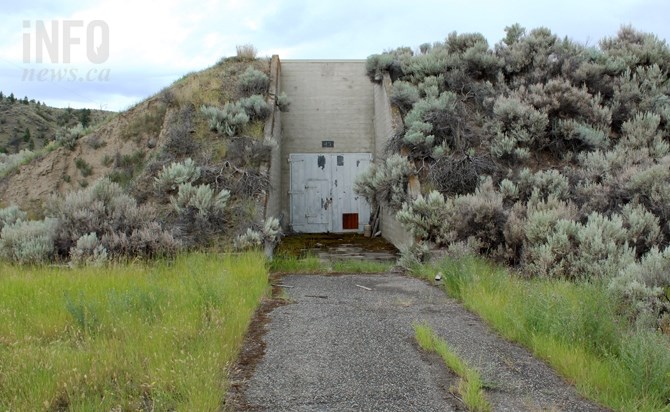
(BRENDAN KERGIN / iNFOnews.ca)
March 19, 2022 - 12:30 PM
This story was first published in 2016
KAMLOOPS - When people look for naval bunkers, Kamloops might not be their first stop. And it probably shouldn’t be, as the city’s 22 historic Second World War era structures are a little hidden and mostly used for storage now.
What they are, though, is a unique reminder of Kamloops’s history, says museum interpreter Sylvia Gropp.
The 22 bunkers that still stand are located throughout the Public Works Centre on Concordia Way, amongst city buildings and properties like the Kamloops Fire Rescue training centre and winter salt storage. However, the bunkers predate almost everything in the area. Built in 1944 and 1945, they were part of an inland port concept for Kamloops, Gropp says. However, the project never actually reached its full potential; the war ended before manufacturing plans were put into place.
During the first half of the 20th century, Kamloops’s location and role as a transportation hub led the navy to consider it an inland port. The country’s two major railways, Canadian Pacific Railway and Canadian National Railway, both ran through the city, along with highway routes. This made it a valuable hub to store supplies away from the difficult to defend coastline.
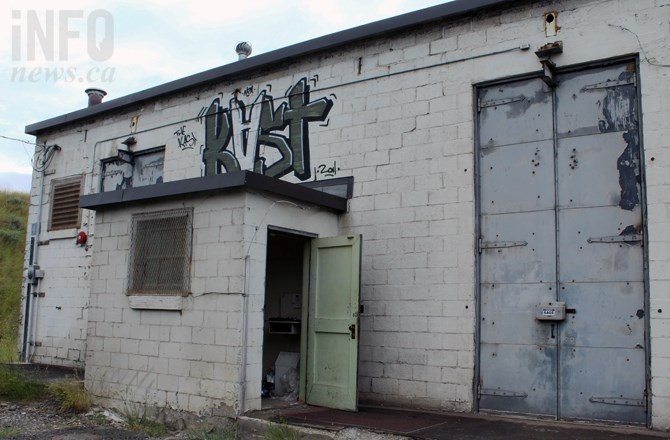
One of the larger, more exposed bunkers with the original, heavy duty doors.
(BRENDAN KERGIN / iNFOnews.ca)
“They were really looking for a safe haven where they could store munitions away from the coast,” Gropp says. “They had administration, a mess hall, living quarters.”
The bunkers weren’t used much after World War 2, though munitions were stored in Kamloops during part of the Cold War.
“A lot of people hear about the Cold War and don’t realize Kamloops had a concern,” she says. “By 1963 these were declared surplus and they were closed.”
Gropp isn’t sure when the bunkers came into the city’s hands, but they’ve been used as storage for years by different groups. She describes them as bare-bones structures, very much what someone would expect from a military storage complex.
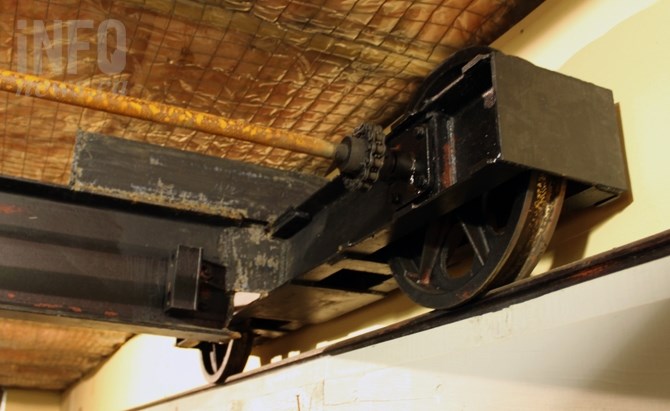
The track system inside one of the bunkers.
(BRENDAN KERGIN / iNFOnews.ca)
Inside the bare-bones nature is apparent. In one, which now holds the Western Canadian Theatre Company’s props and costumes, there isn’t much evidence of its military history, though some structures still survive in the single-storey structure. The doors are the most notable, as they’re essentially huge slabs of metal. One set is human-sized, while a second set is much larger for vehicle deliveries. Steel beams from a system to help move heavy objects around are still in the ceiling, while ramps — and room for a forklift to move about — are clues to the building’s origin story.
There are a couple of different styles of structures; the one used by the theatre company is one of the larger ones and is a mid-sized, grey, flat building. It’s flanked by two smaller ones which are much more common. They’re designed to be covered in earth and the ones still covered blend into the landscape. Disguise was only one purpose for the earth covering. The dirt is a way to absorb explosions from external explosions and, because they were full of things that explode, the dirt was a precaution against internal explosions as well. Some underground bunkers existed, but aren’t likely there anymore, Gropp says.
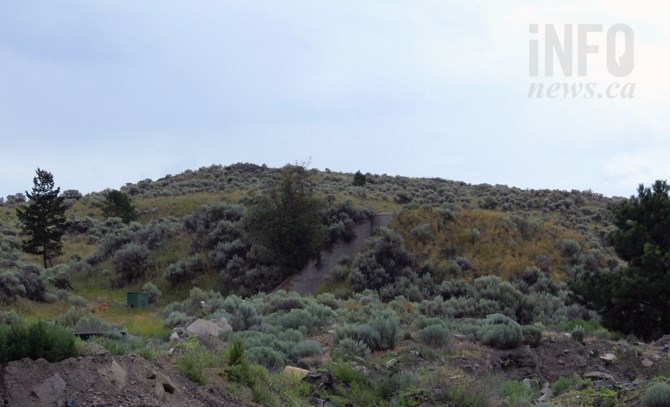
One of the hidden bunkers, covered with earth.
(BRENDAN KERGIN / iNFOnews.ca)
Those disguised by dirt are now difficult to distinguish from the landscape; they’re covered in sage bushes and long grass, like the environment around them. One has a tree growing out of the side. The entrances, which are recessed into the small hills created by the bunkers, often have moss and graffiti. Earth has been removed from some of the small bunkers, exposing the drab, industrial concrete walls. It’s a harsh contrast to the typical bush covered lumps on the bunkers, like seeing a fluffy cat soaked in a bath.
The bunkers are the last of the base that stood 70 years ago. Just north of the bunkers, hikers might find pieces of an old gondola system that moved supplies up the hill from the Mission Flats area. Due to the danger of moving munitions, a tram and the gondola was built to move munitions from the downtown train station. The other option was to move the explosive materials via Columbia Street, a highway at the time.
While the reality of the bunkers is fairly straight forward, Gropp says there’s an urban legend about someone trying to build a tunnel from one of the bunkers. However, she doesn’t know who the rumour might be about or where a tunnel would go to.

A smaller bunker. Normally covered by earth, this one has had its covering removed.
(BRENDAN KERGIN / iNFOnews.ca)
The bunkers are just one part of Kamloops’s military history. A section of Rayleigh was used for munitions testing, Gropp says. When sports fields were built, crews had to be careful to look for unexploded munitions.
The city also has a connection to the airforce. The 419 airforce squadron is also called the “City of Kamloops” squadron or Moose squad due to its original commanding officer, Wing Commander John Fulton. Fulton was originally from Kamloops, and the city’s airport now bears his name. The group celebrated its 75 anniversary in Kamloopsin 2016.
The bunkers are still visited sometimes by those interested in their history. Gropp takes tours to them sometimes around Remembrance Day she says. They were added to the city’s list of heritage sites in 2007 and are listed in the national register of historic places.
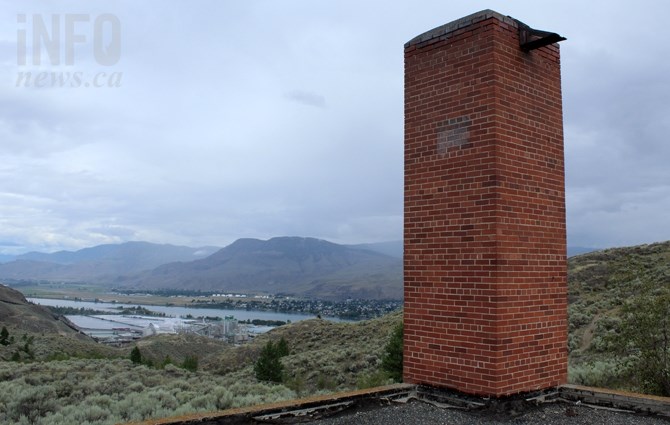
A chimney from the bunkers heating system overlooks the Thompson River.
(BRENDAN KERGIN / iNFOnews.ca)
To contact a reporter for this story, email Brendan Kergin or call 250-819-6089 or email the editor. You can also submit photos, videos or news tips to the newsroom and be entered to win a monthly prize draw.
We welcome your comments and opinions on our stories but play nice. We won't censor or delete comments unless they contain off-topic statements or links, unnecessary vulgarity, false facts, spam or obviously fake profiles. If you have any concerns about what you see in comments, email the editor in the link above.
News from © iNFOnews, 2022